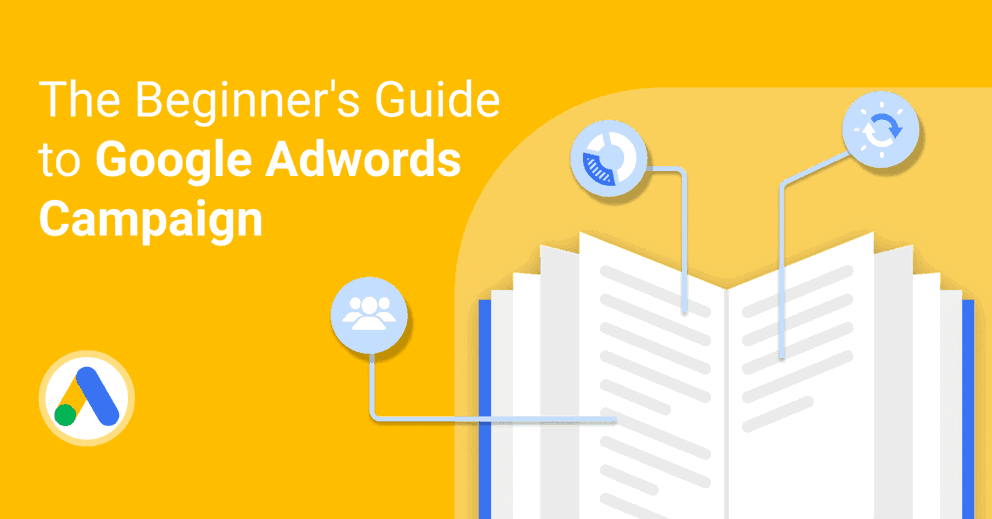The Beginner's Guide to Google AdWords Campaign
A successful Google AdWords campaign takes time and money, but if you know how to create and run it properly, it may be your smartest investment. Google AdWords is one of the most efficient advertising methods for businesses and brands of all sizes.

Feb 04 2020 ● 5 min read

It can help you reach your target audience better than any other PPC platform.
However, to run a cost-effective AdWords campaign and have a positive ROI, you need to think carefully and plan every step you make in advance. And, that’s why we’re here – to tell newbies how to create a profitable campaign on this marketing platform and transform your business without spending money and get nothing for your trouble.
Step #1 – Check Customer Demand
Before you start creating your first AdWords campaign, you need to check if your customers are searching for your service or product on Google. To ensure there’s search volume for your offer, use the Keyword Suggestion Tool by Google AdWords.
This tool will tell you how often people search for the phrases you think they are searching, suggest other similar phrases or keywords, show their competition, and their cost-per-click. Use this tool to decide the right keywords for your campaign.
Step #2 – Calculate Your Maximum Cost-Per-Click (CPC)
This step is crucial to profitably advertise on a specific keyword instead of wasting money on keywords that won’t be profitable for you.
To see if you should invest in a specific keyword, you need to find out your maximum CPC and compare it to the estimated keyword CPC in the Google AdWords Keyword Tool.
Here’s how to calculate your maximum CPC:
Profit per customer x website conversion rate x (1- profit margin) = maximum CPC.
Step #3 – Leverage Competitor Intelligence
Use KeywordSpy Tool to find out which keywords, landing pages, and ads work for your competitors. The longer they advertise on a specific keyword, the more profitable the keyword is.
Step #4 – Powerful Unique Selling Proposition (USP)
This is what makes you stand out from the crowd and convince your prospects to choose you instead of your competitors. So, make sure you give them a strong reason why you are better than the rest, and why they need your service or product.
To do this, investigate your competitors’ marketing materials, websites, and ads and come up with something completely new.
Step #5 – Irresistible Offer
Make sure you explain the value of your service or product in a way that it overweighs its price. But, don’t make it sound too good to be true as your prospects may become skeptical. Instead, give them a believable reason, such as celebrating an anniversary or end-of-the-year sale, for your special sale.
Also, include a money-back guarantee or another type of guarantee in your proposal to reduce the risk to your prospects. Last but not least, tell them exactly what they need to do instead of expecting them to figure out the next move. Use a simple but strong call to action, such as Call Us Today!
Step #6 – Compelling Ads
This marketing platform requires paying when users click on your ads. Therefore, your ads need to attract the right audience and repel the wrong one that will only waste your ad budget.
Compelling ads with a high CTR (click-through-rate) will lower the CPC of your keywords by boosting your AdWords Quality Score. That’s how they have a direct impact on the pay per click for your keywords.
The three most important components to your Google AdWords text ads are:
- A headline that grabs attention and includes your keyword
- Two description lines that state the benefits of your product, describe it, offer social proof, and include your USP.
- A display URL that besides your domain name includes your call to action, offer, or USP.
Step #7 – Congruent Landing Page
Once your prospect clicks on your ad, they shouldn’t just land on your website, but on a specific landing page that matches the ad they clicked and the keyword they searched. So, make sure the entire process is congruent so that your prospects know they are on the right path without losing interest in your product or whatever your ad is promoting.
Your landing page should include details about your offer, benefits of your service or product, USP, a credibility that your business is legitimate, social proof, and a simple but strong call to action.
Step #8 – Conversion Tracking
This step is important to know which ads and keywords are generating sales and which are wasting your ad budget. You can find the AdWords conversion tracking code in your AdWords Account by clicking Tools and Analysis in the top menu and selecting Conversions from the drop-down menu.
Click the + Conversion button to create a new conversion and follow the instructions to define your conversion. Now, add the code to your final page after a person completes their order, such as receipt page or thank you page.
In this way, when someone lands on any of these pages, Google will automatically track the conversions in your Google AdWords account. Use AdWords reporting tool to track it weekly and be ready to change necessary metrics.
Step #9 – Setting Up Your Campaign
Once you do everything mentioned in the previous eight steps, it’s time to click the + New Campaign button and add in your keywords and ads as instructed.
Step #10 – Optimization
Once your ads are alive, you need to track them and optimize them accordingly and regularly because most of them are not profitable right from the beginning. To improve the performance of your Google AdWords campaign, you need to:
- Continue raising your keyword bids if your keywords are generating sales and you’re still not ranked number one. Do the opposite if your keywords are not generating sales. You may even want to completely pause these keywords.
- Test various ads to find the version that gets the most clicks and optimize your CTR.
- Test various landing pages to find out the version that generates most conversions.
FAQ
What Is a Campaign on Google AdWords?
It is a set of ads, bids, and keywords (ad groups) that share specific settings like location targeting and budget, often used to organize categories of services or products of businesses, brands, or companies.
Each Google AdWords campaign is focused on one goal that corresponds to the main thing a business wants to get from the campaign, like website traffic or sales.
What Are the Different Types of Campaigns in AdWords?
The types of AdWords campaigns depend on your advertising goal which can be sales, website traffic, leads, brand awareness and reach product and brand consideration, or app promotion. The type of AdWords campaign determines where people will see your ads.
Google AdWords campaign types include:
- Display Network campaign
- Search Network campaign
- Video campaign
- Shopping campaign
- App campaign
We hope you take each of these steps as instructed when creating your first Google AdWords campaign to ensure positive ROI.
Published on Feb 04 2020

WRITTEN BY
Gintaras BaltusevičiusGintaras is an experienced marketing professional who is always eager to explore the most up-to-date issues in data marketing. Having worked as an SEO manager at several companies, he's a valuable addition to the Whatagraph writers' pool.

